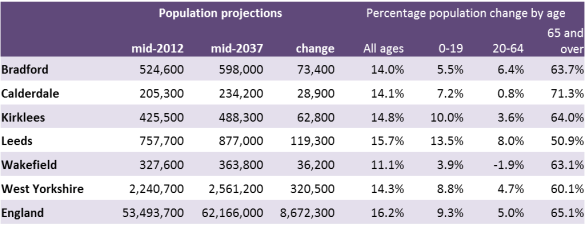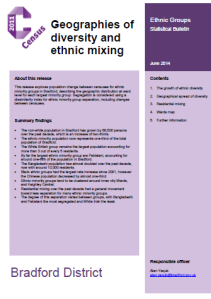The primary purpose of the sub-national projections is to provide an estimate of the future size and age structure of the population of local authorities in England. The latest 2012-based projections released by the ONS on 29 May show Bradford is projected to be home to 598,000 people by 2037. This is a 14.0% increase or 73,400 people in the 25 year period, lower than the equivalent national increase of 16.2%.
How a population is projected to change locally depends on a number of factors that can interact and produce very different growth rates to England as a whole. The size and age structure of the population at mid-2012 is a big indicator of the future population.

Bradford’s population as a whole is projected to be more heavily influenced by natural change (births – deaths) into the future. In later years of the projection, negative net migration plays a larger role in moderating growth.
Local planning needs such as change in service provision often relate to particular age groups and therefore it is important to understand projected changes to the age structure when planning for the future.
ONS has produced an on-line interactive tool for local comparisons of age/sex population projecti ons for each single year.
ons for each single year.
Click here to download the data or for more information.






 ons for each single year.
ons for each single year.
 This research looks at the influence of location on employment for ethnic minorities, asking why ethnic minority people fare disproportionately worse in the labour market in areas of high deprivation.
This research looks at the influence of location on employment for ethnic minorities, asking why ethnic minority people fare disproportionately worse in the labour market in areas of high deprivation.